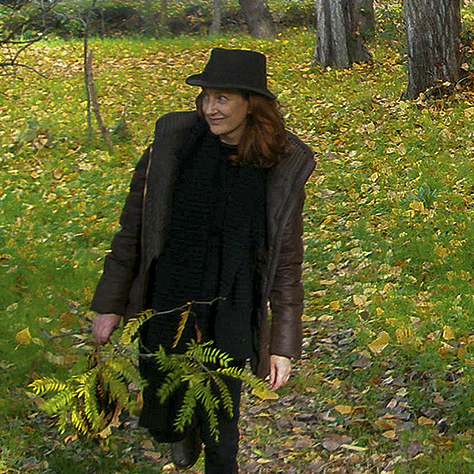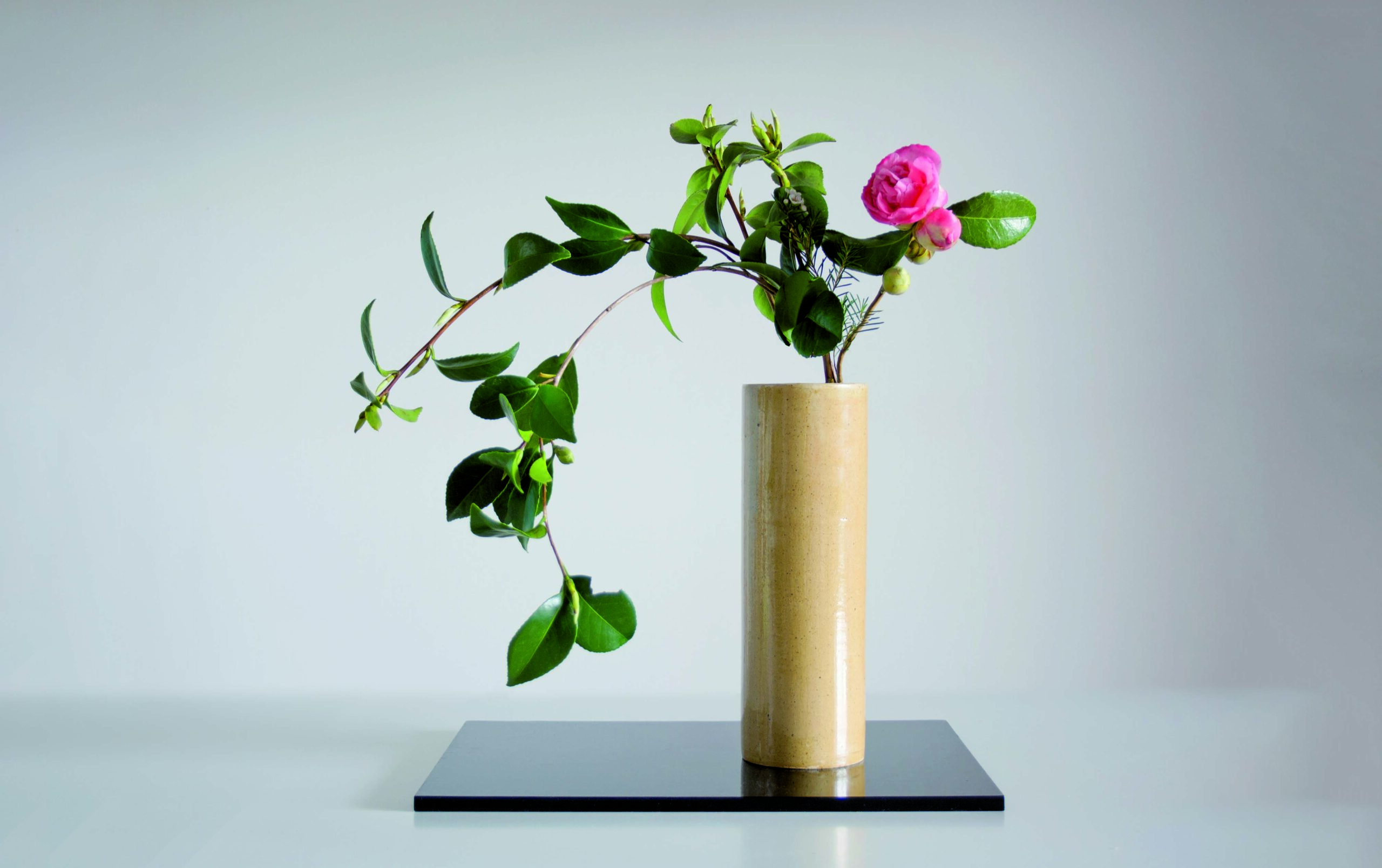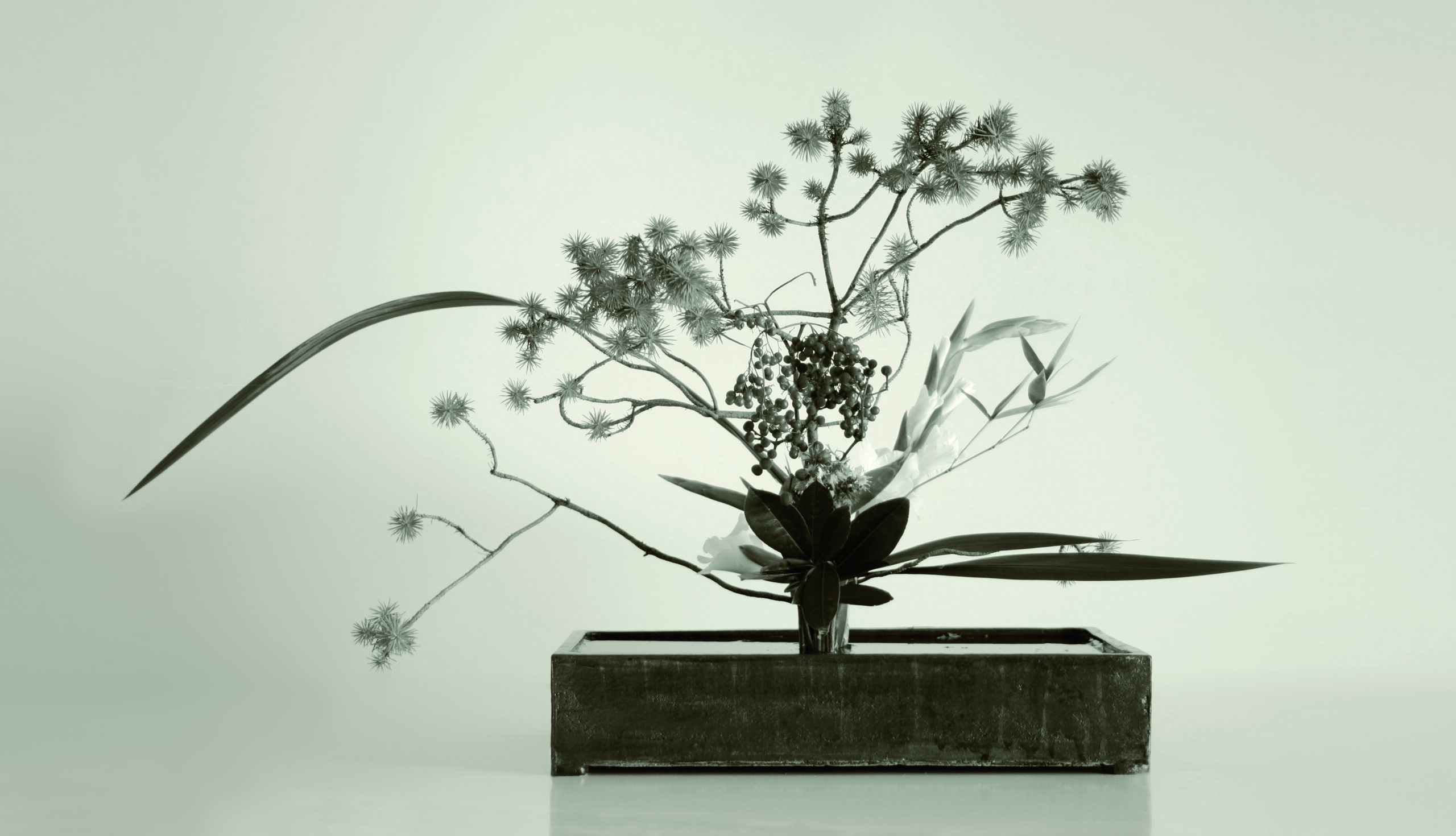Plants and seasons in Ikebana
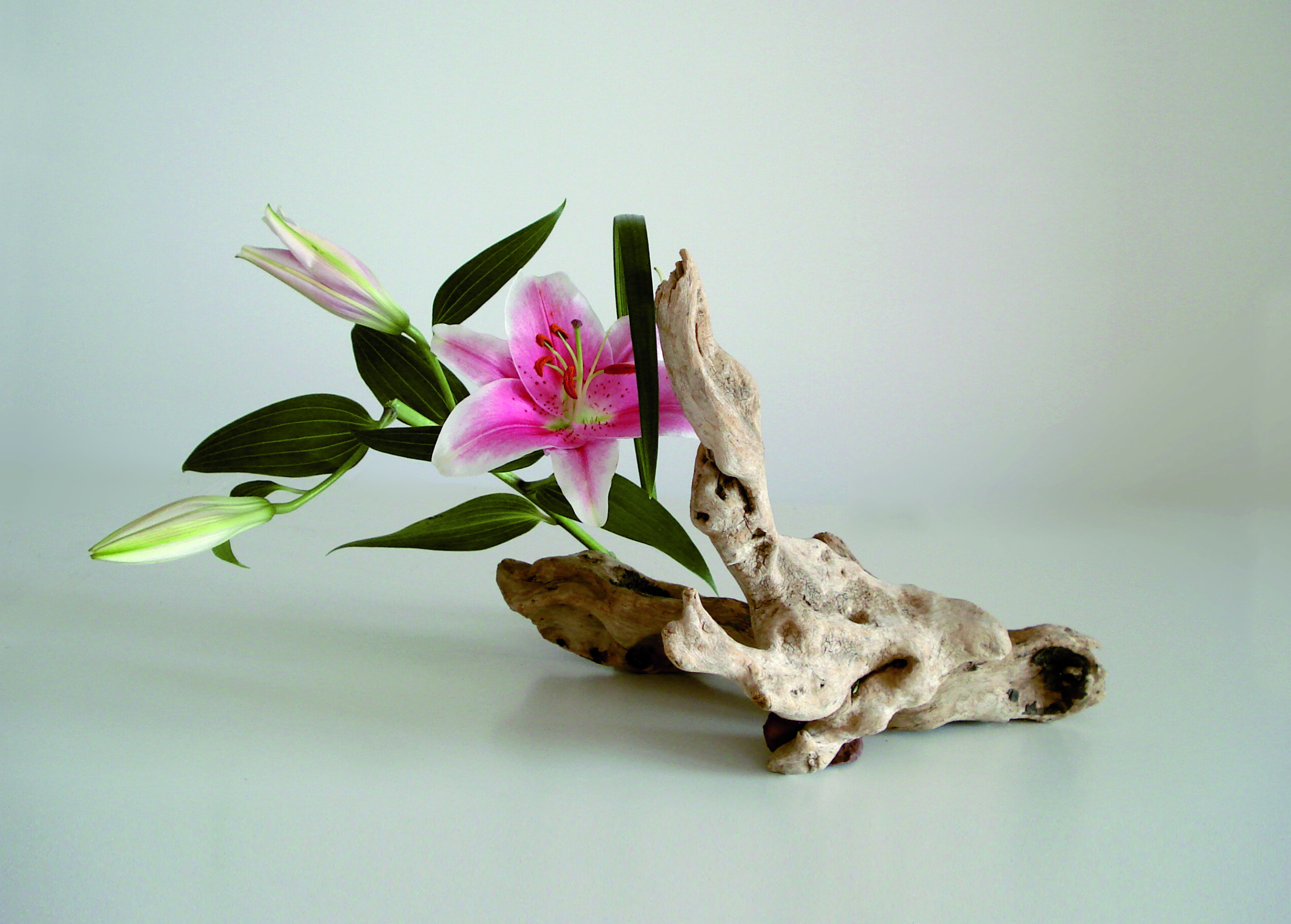
Victoria Encinas once again immerses us in the world of Ikebana, the ancient Japanese floral art which, through the careful combination of different plant species, manages to transmit the essence of the living to those who contemplate its creations. On this occasion she invites us to explore a new perspective on the relationship of this discipline with nature and the seasons of the year.
Which plant species are used in Ikebana
Although it is most common to see branches and tender flowers composing an Ikebana, other parts of plants can also be part of it and contribute their plasticity and aesthetics. Reeds such as bamboo, rough bark, trunks, stems with smooth or broken lines, young shoots, broad, fleshy leaves, ferns, closed buds, berries, autumn-coloured skirmishes, pods, seeds such as those contained in the sunflower flower, expressive roots, fruits, herbs, even molluscs, lichen, stones, sand or lava are all elements that can be used in the arrangements. Nowadays, even non-natural materials have come to be incorporated in free and contemporary styles.
Classical Ikebana is linked to certain emblematic plant species whose symbolic value is related to their belonging to the landscape; they have intrinsic values such as their perennial character or their ephemeral flowering. But also cultural values, metaphorical, symbolic associations, which give them “added” meanings. I will mention some of them: the old age of pine trees, their deep greenness and their endurance, bring a sense of duration and time as well as a sense of wisdom to an arrangement. Bamboo brings the connotation of flexibility and lightness of adaptability, as well as the beauty of reeds and the lightness of their leaves. The flowering branches of the plum or cherry tree carry the message of the return of life after the winter with their abundant and small blossoms. Camellia, chrysanthemum, or peony have been traditionally used in classical arrangements, as have lilies. All of them are naturally grown in Japan and are closely associated with the seasons in which they bloom, but they also have symbolic values. The lotus, the emblematic flower of Buddhism, is a mystical centre and a symbol of rebirth that is also used in classical Ikebana.
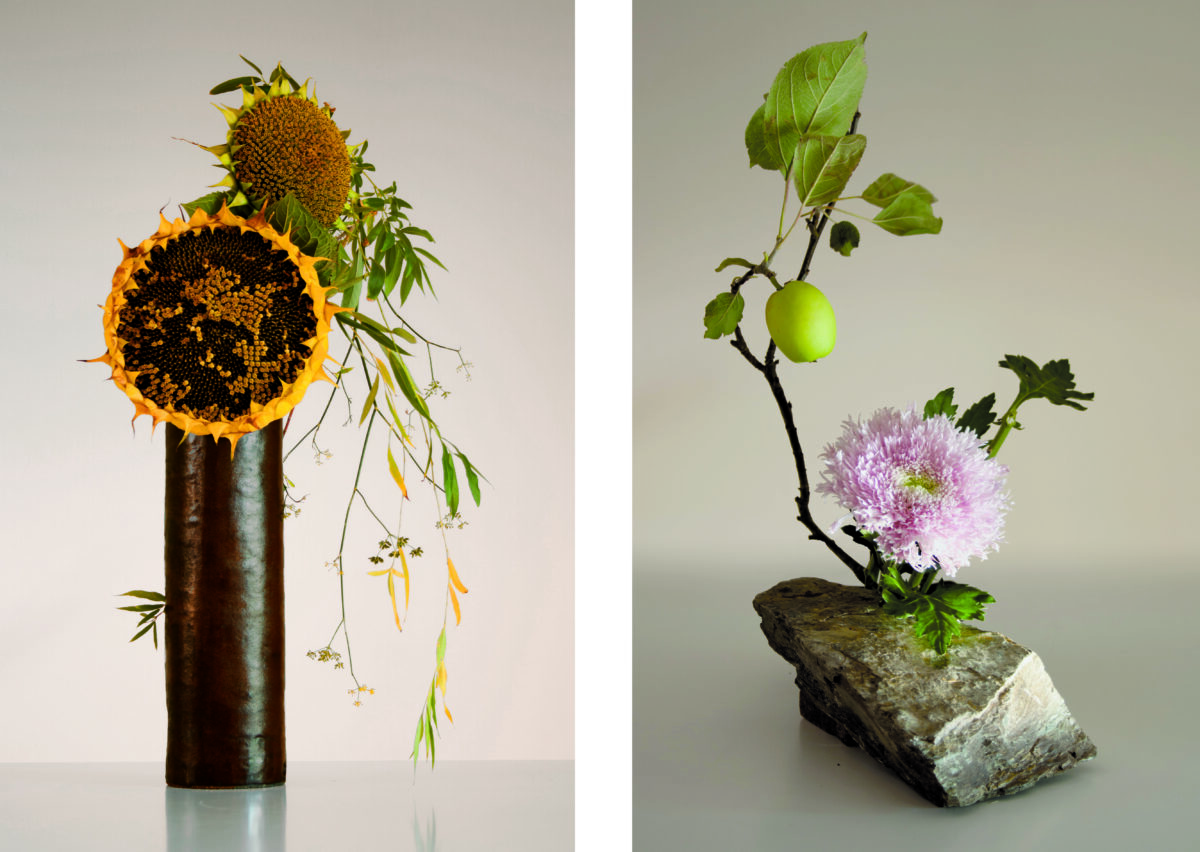
In Ikebana, as a curiosity, I will tell you that not only the perishable part of the arrangements is based on plants, there are even containers made with vegetable materials. Although most of them are made of ceramic, zundos, vertical vessels made of very thick bamboo canes of the Moso type, and trays made of fine woven canes or lacquered wood, are also very popular. Skilfully woven baskets are highly valued, and wooden vessels are also made; even some hollowed-out gourds can be used as vessels.

How plants create harmony in Ikebana
In Ikebana, the different groups of plants are combined, but they are not mixed, each type occupying its own area and contributing its own expressiveness. They are almost always used in contrast, and as we have mentioned in previous articles, defining asymmetries based on triangular schemes. In the associations of plant species, which are the sensual and sensorial source of the attractiveness of the arrangement, there is an argumentative background: the association of plants by “sympathy” or, as Tetsuro Watsutji, philosopher and scholar of landscape anthropology, puts it, by “congeniality”. Plants do not get on because of their similarity or resemblance, but because of their seasonal and landscape coherence. In Ikebana, instead of looking for similarity of forms or colours, we look for contrast, a certain complementary opposition in which we discover the aesthetically stimulating landscape amenity.
This is where geography and season come into play. Although the species form a contrasting arrangement, plants from the same climatic area and at the same time of the year give a natural coherence to the Ikebana. This seems obvious, but today’s access to flowering species in a very distant part of the planet and in another hemisphere or latitude, brought by florists to any place in our cities, makes us fall into the temptation to mix tropical species with shrubs from a continental climate, making somewhat kistch compositions without much sense. This is not an uncompromising rule, of course, but it is worth bearing in mind this factor that calls for respect for nature, not to “play” with it according to our desires, but to listen to it and learn from it.
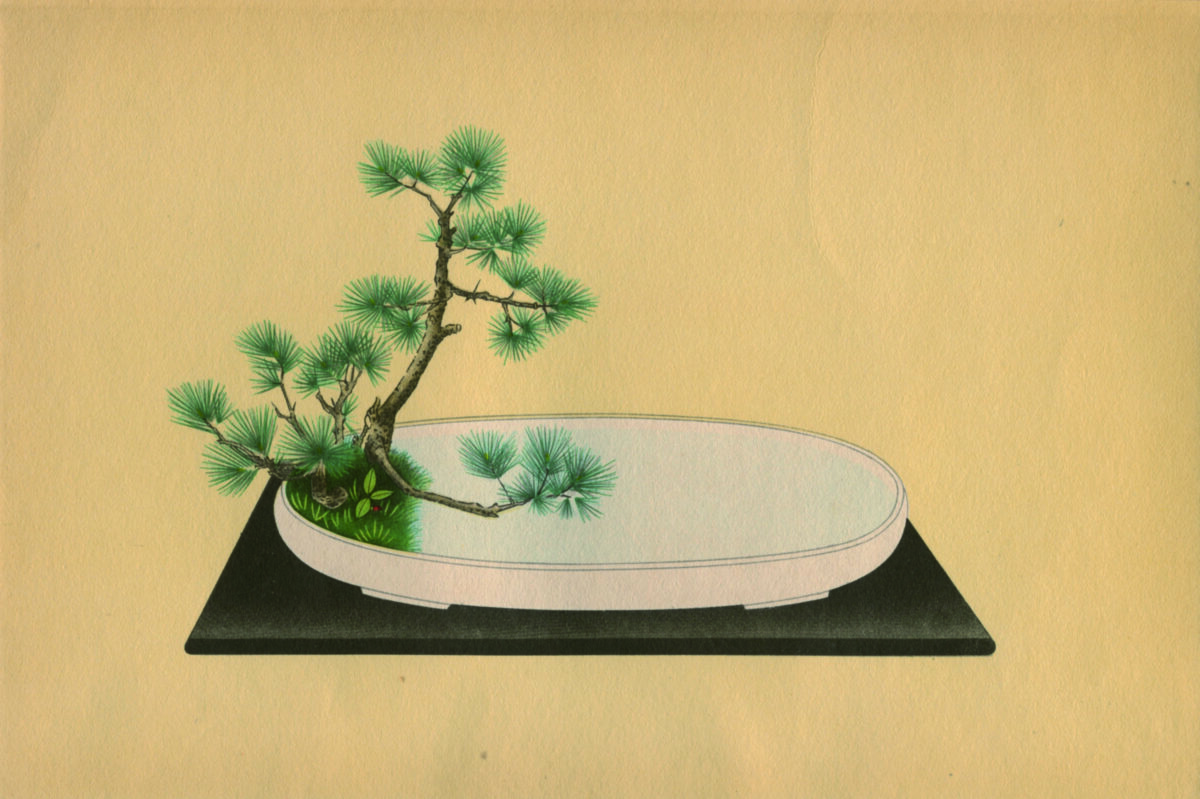
Living in the countryside, or having a garden, -your own or those of friendly neighbours-, means that our arrangements maintain the natural sobriety, which allows us to express the poetics and beauty of the landscape. Personally, I pay a lot of attention to pruning, and I recover the recently cut remains in the gardens to make Ikebana.
Types of vegetation according to their qualities in Ikebana
Physical qualities and aesthetic qualities are one and the same in Ikebana. The plant offers the necessary plasticity to the art. The Ikebana artist reinterprets – while respecting the nature of each plant – its essential qualities.
There is an indicative classification for plant species in Ikebana. They are considered to be kimono, kusamono and tsuyomono. The quality of the trees and their woody matter is kimono. The herbaceous, tenderer, whitish-white flowers are kusamono. The parts that participate in both qualities are tsuyomono and are used as a strong part -or chimono– if combined with herbaceous; and on the contrary, they do the yin, soft and tender function –kusamono– when combined with stronger branches. Among the latter is the camellia, which can perform all functions. In single-material arrangements, this is often tsuyomono. And it is often a flowering tree or shrub. At a certain time of the year, a camellia branch, woody and strong, with buds, green leaves and open flowers contains everything and may not need any counterpoint to be used alone in an Ikebana; in a single plant there is the strength of the branch, the evergreen life of the leaf, the ephemeral and colourful surprise of the flower, the promise of the future in the bud.
The plasticity and the poetics of plants in Ikebana
The first aesthetic consideration for a plant before making an Ikebana is the study of its shussho, the specific personality of the plant or plants to be used, its plastic qualities (vigour, colour, texture, proportions and shapes), the expansive dynamics and structure of its growth.
In the spirit and expression of an Ikebana there is also the seasonal poetics, the cyclical transformations that give a special climatic atmosphere. It is a matter of capturing and conveying the subtle quality that characterises natural moments. Arrangements made in spring, summer, autumn or winter are not the same and the expression of each time of the year is characteristic; it provokes feelings that we are all familiar with associated with the time of the year.
Ikebana, as an aesthetic reflection of natural processes, shows the birth, growth, splendour and decay, as well as the latency, the dormant waiting of plants. To do Ikebana is to keep attentive a poetic spirit that identifies with the transformations of nature, the states of the soul linked to the states of the weather, the changing forms of the plants that pass through the seasons. The annual cycles show facets in which art has found an emotional and spiritual meaning, whether in literature, painting, landscape painting or Ikebana. On countless occasions, art has relied on the states of nature to speak of hope, fulfilment, melancholy, tragedy…
The seasons
I will show the image of one or two arrangements for each season. Rather than describing them from an aesthetic/poetic point of view, I have chosen to accompany them with a haiku by Matsuo Basho (1944-1694) who has been called the Japanese poet of nature.
Ikebana is, like haiku, an art of evocation. In his haiku (short poetic compositions), Basho captures the ungraspable connotations of the ephemeral moment; just as Ikebana seeks to evoke.
Translations by Beñat Arginzoniz (see Bibliography).
Autumn
“Autumn is leaving,
chestnut hedgehogs,
open hands”.
Basho

Ikebana in autumn shows special affection for the signs of decay of the deciduous tree and its colours, using branches of auron, oak,… also in seasonal flowers such as chrysanthemum, celosia, cosmos, amaranth, autumn anemone; herbaceous and hardy wild plants such as fennel stems or the leaves of lilies which often show signs of the passing of time, tanned areas for the summer, aesthetically interesting irregularities. It is not the perfect, intact plant that is sought, but the beauty of natural processes, and autumn in this respect offers many poetic elements.
Winter
“Defeats the winter
celebrating the flowers
of the heart “.
Basho
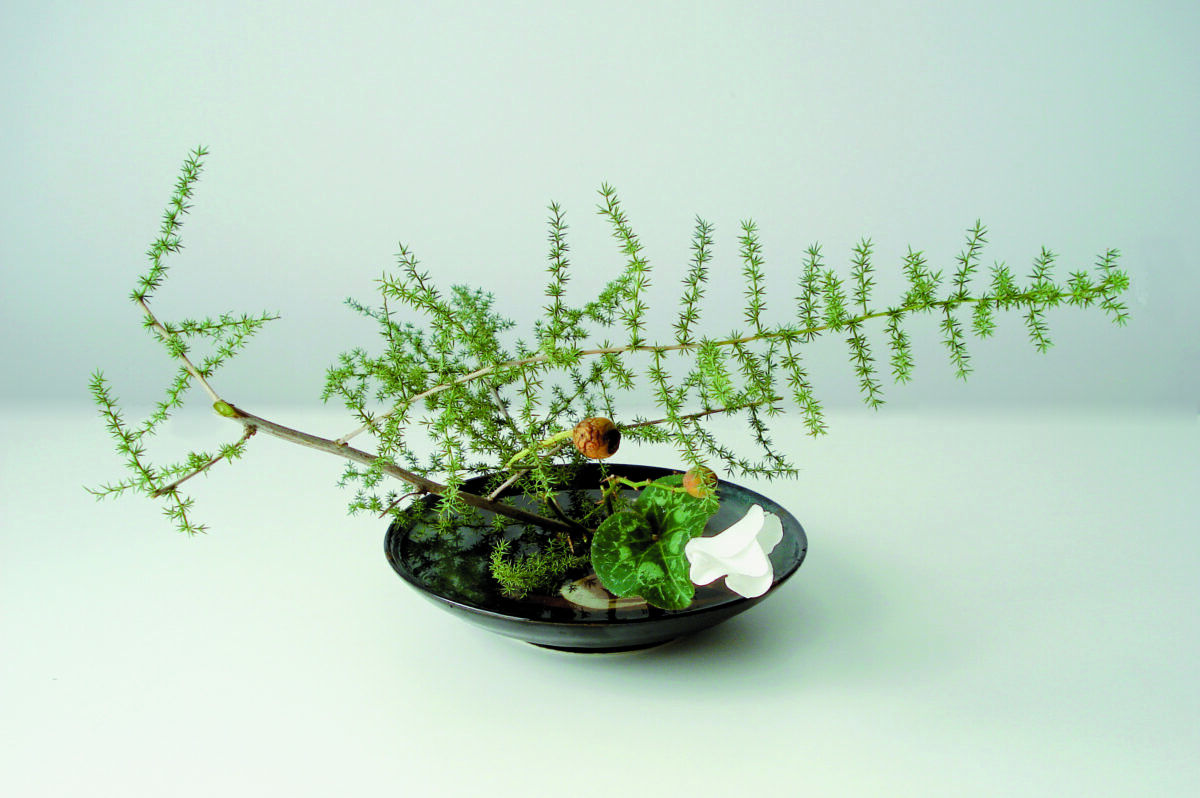
Winter Ikebana is more ascetic and reveals a solitary intimacy with the landscape through the bare beauty of the branches and the awareness of the significance of the endurance of evergreens. Latent strength. Particularly expressive is the end of the season, with the incipient signs of the return of light and the approach of spring. Of course, the pine, and the bamboo. Also the surprising flowers of the camellia, the daffodil, the cyclamen, or the greenery of the hardy feathers.
Spring
“In twenty days
I saw the beginning and the end
Of many flowers”.
Basho

Spring Ikebana is very fresh, green and colourful, like the abundance of the season. But first of all it celebrates the dawning of the first signs of the end of winter, the blossoms of trees such as plum and cherry are very welcome. The return of joy at the emerging expression of life. Almost all shrubs offer magnificent blossoms. A wide variety of flowers are used in Ikebana in this season, spirea, gysophila, magnolia, calla, freesia, wisteria, or lake plants with firm stems such as bulrushes, rushes, etc.
Summer
“Falls from the willow tree
a great darkness
over the flowers”.
Basho
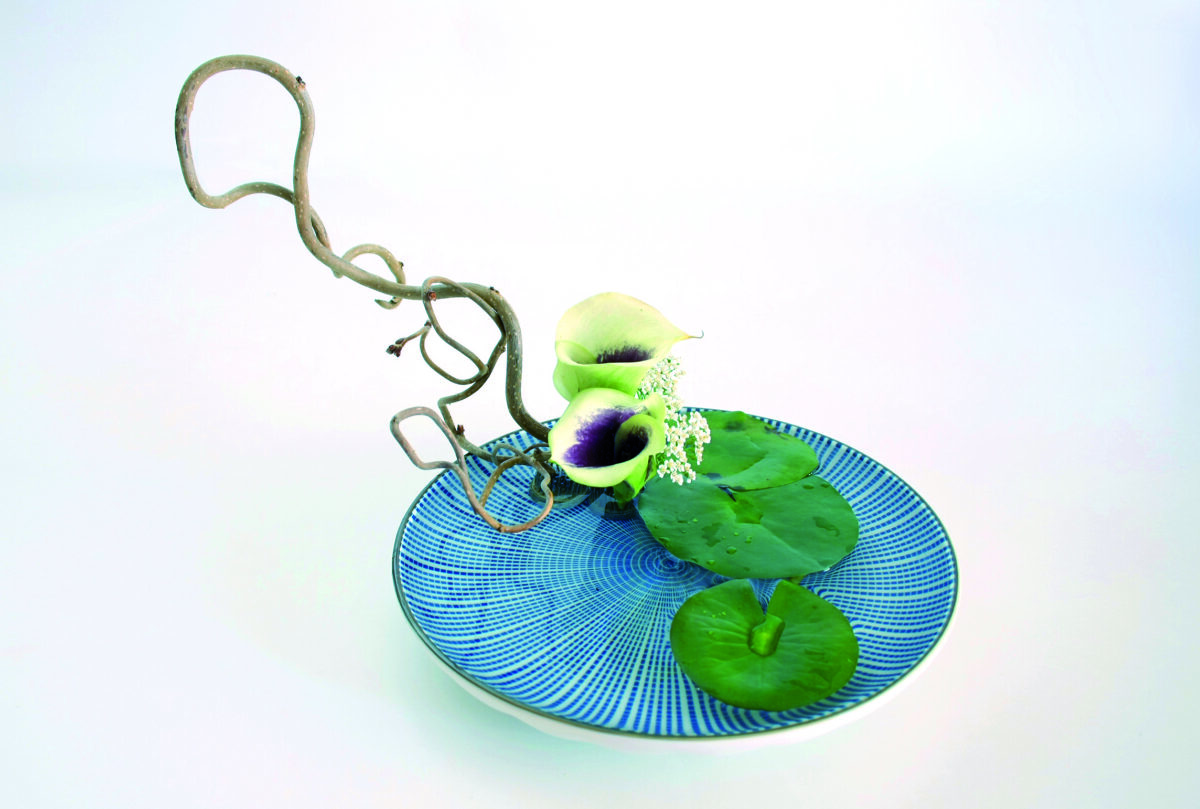
Ikebana performed in hot weather tends to show more of the water surface, as an essential part of the arrangement that conveys the sensation of freshness. It is done by emptying more the source of the composition and opting for suiban-type containers, low and wide, as well as placing the branches and flowers in an asymmetrical area of the composition. Their spirit is that of fullness, with fleshy flowers like the hydrangea, or very sophisticated ones like the anthurium, broad leaves like the banana tree, even with fruits, like the persimmon, the pomegranate,… we will see images of them in the following chapters.
Bibliografia
«Basho. Poesía completa» Ediciones El Gallo de Oro, 2019. Translation by Beñat Arginzoniz.
"Best of Ikebana" History of Ikebana. Minobu Ohi. Shufunotomo CO.,1962.





